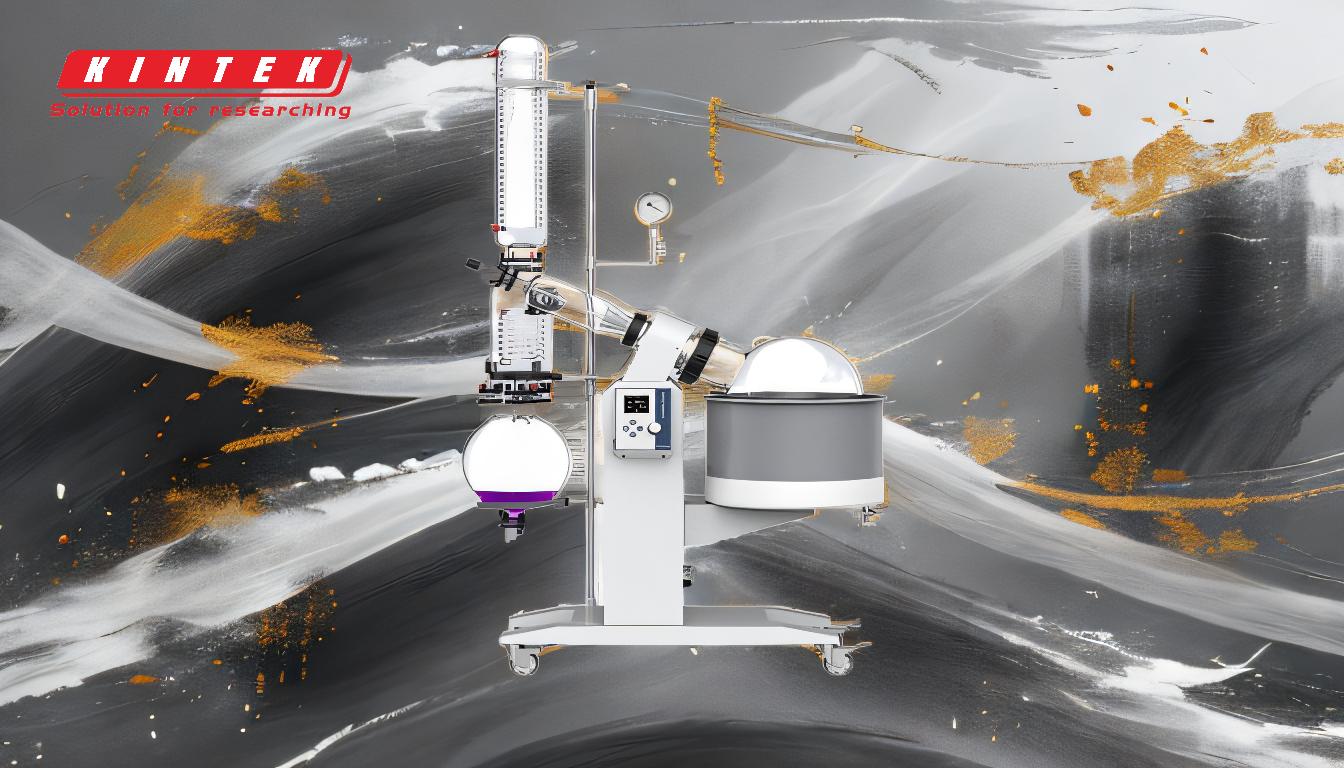A rotary evaporator lowers the boiling point of a solvent by operating under reduced pressure (vacuum). This reduction in pressure decreases the energy required for the solvent molecules to transition from the liquid to the gas phase, effectively lowering the boiling point. The process involves rotating the evaporation flask to create a thin film of the solvent on the flask's inner wall, which increases the surface area for evaporation. The solvent vapor is then cooled and condensed in a separate flask. This method allows for efficient distillation of solvents at lower temperatures, making it ideal for heat-sensitive materials and high-boiling-point solvents.
Key Points Explained:

-
Principle of Vacuum Distillation:
- A rotary evaporator operates under reduced pressure, which lowers the boiling point of the solvent. This is because the reduced pressure decreases the vapor pressure needed for the solvent to boil.
- For example, reducing the vacuum from 760 torr (atmospheric pressure) to 5 torr allows high-boiling-point solvents like dimethylformamide and dimethyl sulfoxide to boil at 50°C instead of their standard boiling points.
-
Rotation of the Evaporation Flask:
- The evaporation flask is rotated at a constant speed, creating a thin, uniform film of the solvent on the inner wall of the flask.
- This rotation increases the surface area of the solvent, which enhances the rate of evaporation and ensures uniform heating.
-
Heating Mechanism:
- The flask is heated evenly using a water or oil bath. This controlled heating, combined with the reduced pressure, allows for rapid evaporation of the solvent at lower temperatures.
- The combination of heating and vacuum ensures that even heat-sensitive materials can be processed without degradation.
-
Condensation and Collection:
- The solvent vapor produced during evaporation is cooled by a high-efficiency glass condenser.
- The condensed solvent is then collected in a separate recovery flask, allowing for the separation and purification of the solvent from the sample.
-
Advantages of Lower Boiling Points:
- Lowering the boiling point under vacuum allows for the distillation of high-boiling-point solvents at much lower temperatures, which is crucial for heat-sensitive materials.
- This method also reduces the risk of thermal decomposition, making it suitable for a wide range of applications in chemistry and biochemistry.
-
Enhanced Evaporation Efficiency:
- The combination of reduced pressure, rotation, and heating significantly improves the efficiency of the evaporation process.
- The large surface area created by the rotating flask ensures that the solvent evaporates quickly and uniformly, making the process faster and more efficient.
-
Applications in Various Fields:
- Rotary evaporators are widely used in laboratories for solvent removal, concentration of solutions, and purification of compounds.
- They are particularly useful in the pharmaceutical, chemical, and food industries, where the distillation of heat-sensitive materials is required.
By understanding these key points, one can appreciate how a rotary evaporator effectively lowers the boiling point of solvents, making it an essential tool in many scientific and industrial processes.
Summary Table:
| Key Feature | Description |
|---|---|
| Vacuum Distillation | Reduces pressure to lower boiling points, ideal for high-boiling-point solvents. |
| Rotation of Flask | Creates a thin solvent film, increasing surface area for faster evaporation. |
| Heating Mechanism | Uses water/oil baths for controlled, uniform heating at lower temperatures. |
| Condensation & Collection | Cools vapor with a glass condenser, collecting purified solvent in a flask. |
| Applications | Used in pharmaceuticals, chemistry, and food industries for heat-sensitive materials. |
Optimize your lab processes with a rotary evaporator—contact us today to learn more!














